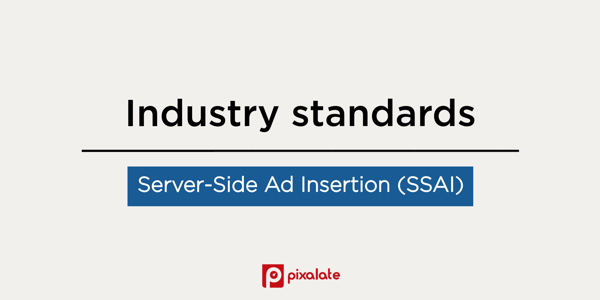
This week's review of ad fraud and quality in the digital advertising space.

Pixalate, the first company accredited by the MRC for invalid traffic (IVT) detection and filtration in OTT/CTV, has gathered industry experts for a webinar on the use of Server-Side Ad Insertion (SSAI) in OTT/CTV advertising. The webinar will take place on July 11, 2019 at 1pm ET.
On Thursday, July 11, 2019 at 1:00pm ET, Pixalate Product Manager Chris Schwarz will host:

Pixalate's latest blog overviews industry standards for server-side ad insertion (SSAI). "How are the industry’s governing bodies — namely the Media Rating Council (“MRC”) and the Interactive Advertising Bureau (“IAB”) — approaching server-side ad insertion (“SSAI”) measurement?"
The blog post reads: "The industry’s growing standards around SSAI ... are all steps in the right direction, and Pixalate strongly encourages their widespread adoption."

"Total digital advertising spending will reach $520 billion by 2023; rising from $294 billion in 2019," reported Which-50, citing new research from Juniper Research. "One in five of those dollars will be lost to fraud, revealed in figures contained in separate research by the company."
The rise will be "driven by the use of AI-based programmatic advertising to deliver highly targeted ads," the article noted. "Digital advertising includes online, mobile browsing, in-app, SMS, DOOH (Digital-Out-of-Home) and OTT (Over-the-Top) TV services."

"The IAB Tech Lab on Thursday released a new standardization system for third-party audience data and an auditing and credentialing program for data sellers," reported AdExchanger. It's an effort to bring increased transparency to third-party data segments.
"The new data transparency standard would include information like the date when a user ID was collected, the URL, location data and if the segment includes lookalike modeling," the article noted.

"Less than half (48%) of ad execs say they currently have the ability to accurately measure digital ad fraud and/or non-human traffic, but almost all of them believe it is eating into significant shares of their ad budgets," reported MediaPost, citing a new study from Advertiser Perceptions.
*By entering your email address and clicking Subscribe, you are agreeing to our Terms of Use and Privacy Policy.
These Stories on Weekly Recaps
*By entering your email address and clicking Subscribe, you are agreeing to our Terms of Use and Privacy Policy.

Disclaimer: The content of this page reflects Pixalate’s opinions with respect to the factors that Pixalate believes can be useful to the digital media industry. Any proprietary data shared is grounded in Pixalate’s proprietary technology and analytics, which Pixalate is continuously evaluating and updating. Any references to outside sources should not be construed as endorsements. Pixalate’s opinions are just that - opinion, not facts or guarantees.
Per the MRC, “'Fraud' is not intended to represent fraud as defined in various laws, statutes and ordinances or as conventionally used in U.S. Court or other legal proceedings, but rather a custom definition strictly for advertising measurement purposes. Also per the MRC, “‘Invalid Traffic’ is defined generally as traffic that does not meet certain ad serving quality or completeness criteria, or otherwise does not represent legitimate ad traffic that should be included in measurement counts. Among the reasons why ad traffic may be deemed invalid is it is a result of non-human traffic (spiders, bots, etc.), or activity designed to produce fraudulent traffic.”

